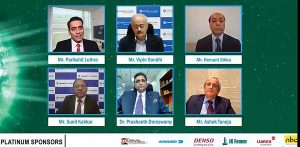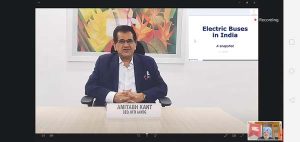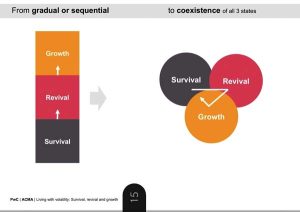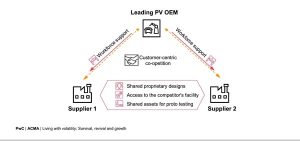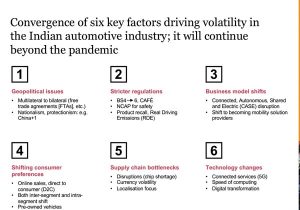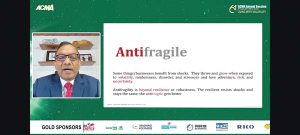At the 61st ACMA Annual Conclave, the industry hinted at sustenance as the key for seeing through the volatile phase. Team CV looks at the efforts in this direction.
The 61st ACMA Annual Conclave held a day after the SIAM annual conclave took forward the key points of interest and concern from the previous day. These were used to build upon and incorporate inputs of the components industry. Citing Prime Minister Narendra Modi’s acknowledgement of the industry as a whole contributing to the Indian economy, the industry expressed gratitude for the recent government interventions and for its praises. The industry, it is well known, came forward to lend a helping hand to the government in the course of the pandemic through several out of the box initiatives. The pandemic also laid the foundation for accelerated changes in technology and services as a solution. The recent government interventions like the scrappage policy and Production Linked Incentive (PLI) scheme for the auto and the auto components industry have played the role of a catalyst. It has helped the industry reassess strategy across phases of survival, revival and growth. Sunjay Kapur, President, Auto Component Manufacturer Association (ACMA) mentioned “As it’s said, in a time of crisis, the medal of brave is tested and true character is revealed. I am extremely proud of our industry and the way we have supported each other to overcome the challenges”.

The Indian automotive manufacturers and component producers helped each other and the government authorities in not just fighting the pandemic but in also helping revive the business. Manufacturers offered significant financial aid to designated funds, deployed vehicles for Covid care, contributed to frontline initiatives among other significant initiatives. At the same time, the industry did not falter in staging a revival based on its initiatives of sustenance. SS Kim, CEO at Hyundai Motor India Ltd. said, “Localised supply chains became evident as a means to hedge the risk of global disruptions. India needs to strongly focus on creating a robust vendor ecosystem, which will go a long way in making India a global manufacturing hub with government support.”
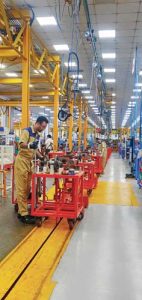
Vocal for localisation
Localisation is crucial, the industry agreed to. Going forward, the industry wants to see more local content per vehicle. In effect, the industry is working towards part localisation by reducing the dependence on imported content. It is expected to enable the industry to be in complete control of the quality and costs of the finished goods. NITI Aayog’s, Chief Executive Officer, Amitabh Kant said, “India needs to de-risk supply chains by boosting localisation and reducing dependency on imports from China. We must immediately focus on localising machined components, lightweight polymer-based parts and BSVI parts over the next few quarters.” The pandemic is known to have resulted in the disruption of the supply chain and negatively impacted revenue and manufacturing timelines. Former ACMA President, Deepak Jain said, “A long-term, stable and technology agnostic roadmap that allows sufficient time for localisation of technologies would be critical for the survival and competitiveness of our industry.”
Riding the EV wave
The conclave was quick to address the growth of EVs and the supply-side and demand-side dynamics associated. The local manufacturing of EVs and their components, it was agreed, would be crucial in the next phase. Manufacturer launches of EVs on a Year To Date (YTD) basis hint at a growing acceptance across the vehicular spectrum, from two-wheelers to heavy commercial vehicles. Kant mentioned, “Indigenisation of EVs and EV components is critical to riding the EV growth wave. We should not target to be a major importer of EV parts.” Kant was also quick to caution established manufacturers on the startups eroding their market shares as early movers instead.
Leveraging big-data
The pandemic forced the industry and its service arms to come to a grinding halt. In FY2021, the sales exposure to the Original Equipment Manufacturers (OEMs) degrew by three per cent; aftermarket degrew by seven per cent; exports degrew by eight per cent all in all forcing the industry to realign. This exercise received a short in the arm with the use of big data and an accelerated digitisation drive both upstream and downstream. Remote operations of the shopfloor and or remote technical briefs were unprecedented up until the pandemic. By the third quarter of 2020, Solutions-as-a-Service (SaaS) were well woven into the business model. A business model that will continue to thrive even after a post-pandemic scenario. Kant opined, “Globally, automakers are moving very fast in incorporating digital and analytics in their day-to-day operations. As manufacturing philosophy expands from Just-In-Time to Just-in-Case, companies can win by leveraging data analytics and digital technology to grow faster”.
Negating volatility
Commenting on the transformation plans of OEMs, Dr Mahendra Nath Pandey, Union Minister for Skill Development and Entrepreneurship of India said, “The auto component industry in India is a testimony to India’s spirit of entrepreneurship. It accounts for over 2.3 per cent of India’s GDP and generates employment of over five million, making it a key driver of the Indian economy.” The auto components industry was advised to step up investments in Research and Development (R&D), other engineering aspects besides looking at transforming erstwhile business practices. On automation deemed crucial for a quality, the minister cautioned the industry to balance it with human intervention. He advised the need for tier2s and tier3s often associated as the weak link in a value chain to realign in a bid to survive.
On the need to work in tandem with OEMs for the supplier partners to stage a revival, R. C Bhargava, Chairman, Maruti Suzuki India Limited said, “The component industry is the backbone of car manufacturing. They enabled OEMs to restore production after lockdowns and restrictions.” Lauding the industry for its performance, Bhargava expressed hope on the components industry geared to compete with global giants while fulfilling industry demands. Dr Pawan Goenka, Chairman of, SCALE Committee and Former Managing Director & Chief Executive Officer (CEO), Mahindra & Mahindra Ltd., expressed, “I am proud of the quality shift from the 1990s to where we are today. Product development in India has evolved and so has the supplier ecosystem. Indian suppliers can rub shoulders with anyone globally.”
Without knowing the word Atmanirbhar or self-reliance, OEMs and suppliers in India added Goenka have worked together over the past three decades to achieve where they are today. Admitting to the global status is a long haul, he said there are many positives to believe the industry was in the right direction. Citing the industry’s struggles in coping up with components shortage case-in-point being the semiconductor chips, Goenka credited ‘Antifragile’ for bringing in the much needed supply-side shock that the industry could benefit from. “They thrive to grow when exposed to volatility, and ad-hoc disruptions,” he exclaimed.
Ashwani Gupta, Chief Operating Officer, Nissan Motor Corporation gave the example of Nissan’s business transformation plan that the OEM undertook 20 months ago. He cited the plan to deal with the pandemic induced uncertainty; matching global trends; pacing itself for the future. Compared to manufacturing relying on 90-100 days of inventory, Gupta claimed the industry was able to operate at one-tenth of the scale at nine to 10 days of inventory. “Removing inefficiencies from the market helps in gaining profits which were learnt in a pandemic,” he said. He focused on ‘migration’ as it contributed to four major revolutions. Climate migration is one of the major concerns worldwide and a major contributor to it is global warming. He then referred to urban migration and also the new-age virtual migration. Gupta also spoke highly of all OEMs striving to attain carbon neutrality by 2050.
The way forward
The Indian market allows the co-existence of multiple technologies. Cautioned Jain, the government should plan the introduction of new technologies in such a way that it enables localisation of adequate technologies. In a manner that facilitates the components industry to offer higher value-added solutions and realise the Return on Investment (RoI). Speaking about the permanent changes that the automotive industry foresees in future, Vipin Sondhi, Vice President, SIAM and MD & CEO, Ashok Leyland pointed that health crisis, scenario planning, accelerated adoption of alternative fuels, customer expectations, MaaS under the umbrella of sustainable development will play a crucial role going forward. The transition to electric mobility on the other hand will require some policy support and some handholding from the customers, it was said. While talking about survival and revival during pandemics, cash preservation was called out as key for the future too. Engaging with the supply chain and being transparent with them was given its due at the conclave. Arun Goel, Secretary of Department of Heavy Industries, cautioned the industry to keep a check on the imports proportion and to back it with a robust ecosystem that can withstand the change in technology. With e-mobility, he said the industry had a long way to go on the localisation front from the present 50 per cent. He also drew attention to the role of accelerators or industry bodies in this time for development.



